OLED (Organic Light Emitting Diodes) are light emitting panels made from organic (carbon based) materials that emit light when electricity is applied. OLED are used today to make beautiful and efficient displays and large, efficient and beautiful lighting panels.
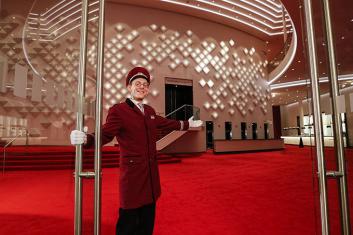
An OLED 'light bulb' is a thin film of material that emits light. OLED is the only technology that can create large "area" lighting panels (as opposed to point or line lighting enabled by LEDs and fluorescent bulbs). OLEDs can be used to make flexible and transparent panels, and can also be color-tunable. OLEDs emit beautiful soft diffused light - in fact OLEDs lighting is the closest light source to natural light (with the exception of the old incandescent lamps).
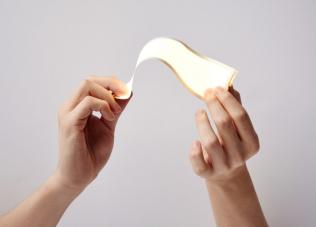
The OLED lighting market
OLED is an amazing technology for lighting - it creates beautiful, efficient and healthy light sources. OLED lighting has great promise but unfortunately the high price of production is a challenge that no one has managed to overcome and OLED lighting remains a small niche industry as of 2021.
In the early years, several large lighting makers (including GE, Philips, OSRAM, LG, Konica Minolta, Panasonic, NEC and others) had active OLED lighting programs, but slowly almost all of these companies dropped out of the market - for various reasons - but the main one being that the large investments in large scale production are not certified to lead to market adoption and the competition with LED lighting is extremely difficult.
There are several companies that still develop and produce OLED lighting panels, but the production volume is still small and most makers target niche markets such as the automotive, health and premium designer markets. Some makers are also offering OLED lamps - click here for our OLED lamp listings.
Further reading
- An introduction to OLEDs
- OLED Technology explained
- Transparent OLEDs
- Flexible OLEDs
- The OLED Handbook, our very own comprehensive guide to OLEDs
Look Labs launches the world's first perfume bottle with OLED lighting
Design house Look Labs announced the world's first perfume bottle with embedded OLED lighting. The Cyber EDP is a unisex fragrance, produced in France.
The perfume bottle included an embedded touch sensor and battery (both produced by a printing process). The OLED is red in color, and Look Labs says the battery will be enough for around 500 cycles.
University of Michigan researchers team up with UDC to develop a low cost flexible OLED lighting R2R production system
Researchers from the University of Michigan, in collaboration with Universal Display are developing a low-cost roll-to-roll (R2R) process to produce flexible OLED lighting panels. The goal is to achieve a panel cost of less than $10 per klm - a tenfold reduction compared to current costs.
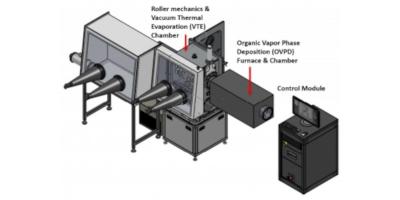
The roll-to-coll system can continuously produce encapsulation panels, at high speeds and reduce costs. The front plane (organic stack) deposition is done via OVPD. The researchers say the will demonstrate reliable, encapsulated 25 cm2 flexible white OLED panels with an efficacy of 50 lm/W and a CRI >85 on barrier-coated plastic films or thin glass.
Konica Minolta's latest small flexible OLED lighting panels can be integrated with NFC
Last month we reported that Konica Minolta started to offer its flexible OLED lighting panels to global customers. One of the panels that KM is producing is a small red panel that can be integrated with an NFC antenna. This is an interesting concept, that is demonstrated in the video below.
The low power consumption of the OLED panel enables it to be powered by the NFC receiver and operate without a battery. It will be interesting to see what kind of applications will be developed using this technology.
Pioneer to supply PolyPhotonix with OLED panels for its diabetes sleep mask
UK-based PolyPhotonix, has been researching OLED technologies for many years, and its first commercial product will be the Noctura OLED sleep mask which helps patients with Diabetic Retinopathy.
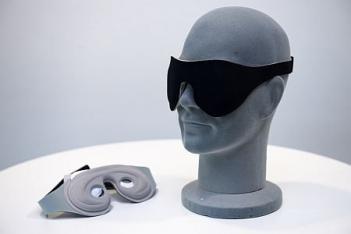
The company announced today that it has signed a deal with Pioneer for the supply of OLED panels for the sleep masks.
Konica Minolta's flexible OLED lighting panels now available globally
In March 2014 Konica Minolta announced that it is starting to construct a R2R flexible OLED lighting fab, hoping to start production in the fall of 2014. This fab entered production later than planned, and took a long time to reach real mass production capabilities. KM has been producing panels for quite some time, but finally it is offering its panels to global customers.
Konica Minolta is currently offering four different modules - two white panels, sized 43x15 mm and 15x15 mm and a red 15x15 mm panel. The red panel can be integrated with an NFC Antenna. The panels can be flexed (40mm radius) and they all offer a brightness of 500 nits.
Kaneka expands its OLED lighting solutions for visual inspection at production sites
The OLED Association reports that Kaneka is seeing a market for OLED lighting panels in manufacturing sites, for visual inspection. The company is currently marketing such solutions in Japan, and the company says that OLED lighting can help detect defects on surface of parts, and it helps to lessen the burden on inspector eyes.
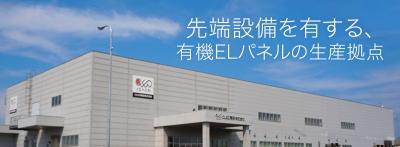
Kaneka says that it has seen defects reduced by 50% by using an OLED system instead of an LED system - at a brightness that is only 10% compared to the brightness of the LED system. It is seeing success in this market and the company's Q2 2020 panel output volume (at its OLED Aomori subsidiary) was up 10X compared to Q2 2019. The company is producing 3.54x3.54 inch OLEDs for this market.
The Hongqi H9 Sedan launches in China with OLED taillights made by Yeolight
China-based OLED lighting developer Yeolight Technology announced that its OLED panels were adopted by Hongqi in its latest H9 flagship sedan which is now being launched in the Chinese market. Hongqi is owned by FAW Car company and is actually the oldest Chinese passenger car brand.
The H9 uses 4 red OLED panels in each module. The panels are 131x32 mm in size and have 5 segments each. The color coordinate is CIY(0.69, 0.31).
BOE unveils automotive OLED tail light solution
At SID Displayweek 2020, BOE demonstrated an OLED automotive taillight module, developed in collaboration with "automotive makers" which BOE did not detail.
The red OLED taillights from BOE offer up to 2,000 nits in brightness and a lifetime of over 20,000 hours. The panels are less than 0.3 mm thick and will operate in a wide temperature range (-40 to 95 Celsius).
Lumtec launches new HIL, ETL and EIL OLED stack materials
This is a sponsored post by Lumtec
Lumtec, a leading OLED materials manufacturer, announced newly developed Hole Insertion layer (HIL), Electron Transport Layer (ETL) and Electron Insertion Layer (EIL) OLED materials. Lumtec says that its patented new materials offer high efficiency and can be used in both OLED displays and lighting panels.
Lumtec has been developing OLED materials for over 20 years, and aims to provide cost-competitive and high performance pure OLED materials. The company also helps its customers with custom synthesis of OLED materials.
Audi reveals its 2021 Q5 SUV, with optional OLED taillights
Audi unveiled its 2021 Q5 crossover, which now includes optional OLED taillights. The new SUV family also includes a plug-in hybrid model and the sporty SQ5 variant.

The OLED taillights are built from three OLED panels, each with six segments. Audi offers three different "signatures" or designs, which the customers can choose from when buying the Q5. The segmented OLEDs show different lighting patterns with locking and unlocking the SUV, or to show a welcome pattern when you are close to the car.
Pagination
- Previous page
- Page 5
- Next page



